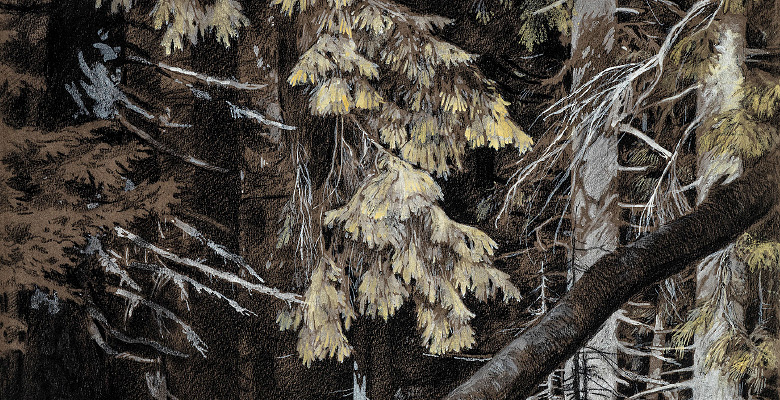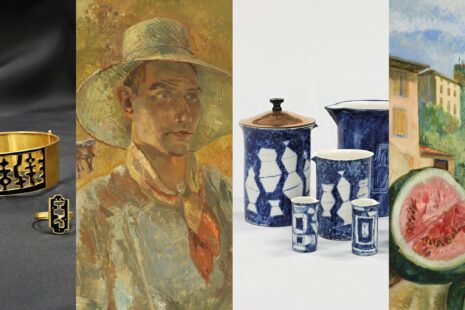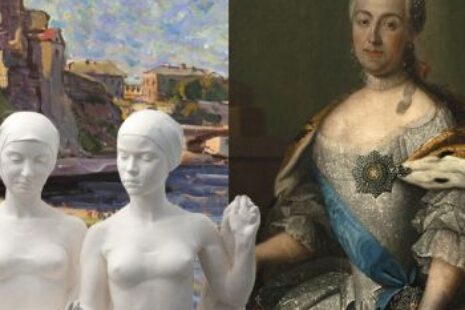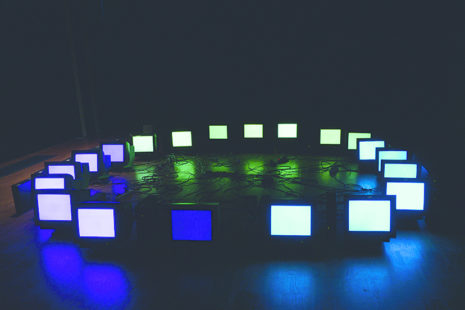In organising an exhibition devoted to Rihards Zariņš’ eclectic creative oeuvre, in collaboration with the National History Museum of Latvia, the Latvian National Museum of Art would like to emphasise the artist’s uniqueness in the context of Latvia’s cultural landscape. He created testimonies to Latvia’s cultural environment that can now be considered as symbols (Latvia’s herald, banknotes, postage stamps and Latvian ornaments, etc.), founded the Art Academy of Latvia’s Graphic Masterclass and was its Head (1921–1936). In the new state, Rihards Zariņš established and led the Latvian State Printing House (1919–1933), as well as leaving a large number of easel graphic works in which he accented national romantic imagery, as a result of which he can be included among late 19th and early 20th century symbolists. Rihards Zariņš is justifiably considered the founding father of the Latvian national school of graphic art and a cultivator and promoter of the technique of etching. The master can be described as a personality with a firm disposition, which his contemporary and friend Janis Rozentāls described as follows in a 1904 collection of articles entitled The Observer: “Zariņš is one of those rare happy characters, who possess such an immense capacity to rebound that no amount of barging by fate can topple them.”
Rihards Zariņš (Carl Richard Woldemar Sarring, 1869–1939) was born in Vidzeme into the family of the lord of Ķieģeļu (Kegeln) Manor. To learn his craft as an artist, in 1888 the young man arrived in Saint Petersburg where he started studies at the Stieglitz Central Technical Drawing School from which graduated in 1895. There, Zariņš initially specialised in the techniques of woodcut and later etching under the tutelage of one of the Russia’s most renowned graphic artists Vasily Mate (Василий Матэ).
In 1891, Rihards Zariņš was one of the driving forces behind the founding of the Rūķis [Dwarf] group of Latvian artists and musicians then studying in Saint Petersburg. After his studies, having received a grant from the Stieglitz School, the young artist spent four years augmenting his knowledge abroad. In Berlin, Rihards Zariņš studied under the watchful eye of Alexander Zick, in Munich under Rudolph Seitz and Maximilian Dasio, in Vienna under William Unger, while in Paris he studied the technique of lithography and nurtured his interest in poster art. From 1899, Rihards Zariņš worked at the State Printing House in Saint Petersburg, where he lived full-time until 1919, when he returned to the newly founded Republic of Latvia and became the founder and Managing Director of the Latvian State Printing House.
Rihards Zariņš was entrusted with commissions of national importance. In 1921, together with graphic artist Vilhelms Krūmiņš, he designed the heraldic design for Latvia’s national coat of arms in which national motifs are incorporated alongside the figures of a lion and griffin. Rihards Zariņš’ talent is exemplified by the painstaking precision of both his draft currency designs and those that were actually produced. The master’s crowning achievement in currency design is his five lat silver coin, created in 1929, whose composition features the figure of a folk maiden, which has become an idiosyncratic symbol of independent and free Latvia, and which continues to grace euro coins today. In academic Jānis Stradiņš’ words, “Rihards Zariņš’ five lat coin is our hymn in the world of coins”.
The artist created technically refined easel graphics and applied graphics works, bookplates, book cover decorations and illustrations, took part in creating cartoons for the satirical magazine Svari [Scales] (1906–1907, 1920–1931). The creative impressions of his time in Paris are evident in numerous witty posters that Zariņš designed. However, the master himself considered his greatest accomplishment to be the publication Latvju raksti [Latvian Ornaments] (volumes 1–3, Riga: Latvian State Printing House, 1924–1931). The artist was awarded the Order of the Three Stars (1926) and the Swedish Vasa Order (1927).
An important place in Rihards Zariņš’ creative oeuvre is occupied by easel graphics, the most significant part of which represents the traditions of national romanticism and symbolism, which often overlapped and spanned the period from 1897 until 1915, when his art was additionally infused with elements of Art Nouveau. These compositions often examined the themes of Latvian mythology, historical legends and folklore. The execution of these works is notable for Zariņš’ use of ornamental decorative art and realistic depiction, sometimes combined in a single composition.
The etching series What Latvia’s Forests Are Whispering (1908–1930) and the coloured etching sheet The Poet’s Grave (prior to 1913) rank among the foremost achievements in the author’s oeuvre, and have served as evidence of high quality Latvian national art in many international projects including the Latvian art exhibitions in Saint Petersburg (1915) and Moscow (1916), Stockholm and Kaunas (1927), Oslo (1933), Helsinki and Tallinn (1936), Warsaw and Tartu (1937). This trend continues also nowadays – in the exhibitions Symbolism and Art Nouveau in the Fine Art of Latvia in Prague (2001), Taking to the Air in Szczecin (2004/2005), Warsaw and Kaunas (both 2005), The Age of Symbolism in Latvia in Brussels (2010) and Luxembourg (2010/2011), Symbolism and Decadence in Stockholm (2015/2016), and in the Baltic symbolism project Wild Souls, organised as part of the Latvia’s State Centenary Programme, in Paris (Musée d’Orsay, 2018), Tallinn (2018/2019) and Riga (2020/2021).
The exhibition in the Great Hall of the Latvian National Museum of Art offers an insight into the complete range of fields that comprised the artist’s creative oeuvre, encompassing the master’s body of work over a period of more than 40 years. A separate part of the exhibition is made up of works by pupils of Rihards Zariņš’ Graphic Workshop. The artworks on view are by Kārlis Krauze, Janis Šternbergs, Marija Induse-Muceniece, Arturs Apinis, Pēteris Upītis, Zelma Tālbergs, Francis Bange, and Arturs Duburs.
The exhibition showcases items from the collections of the Latvian National Museum of Art, National History Museum of Latvia, Museum of Literature and Music, Museum of the History of Riga and Navigation, Tukums Museum, Estonian Art Museum, Rundāle Palace Museum, National Library of Latvia, and the University of Latvia Academic Library, as well as several private collections. The exhibition is augmented by the works of Rihards Zariņš brought from the United States of America by his grandson Aivars Celmiņš, graphic sheets owned by his great-grandson Andris Brieze and a large collection of Zariņš family photographs, which form a deeply personal narrative dedicated to the master.
The title of Rihards Zariņš’ exhibition and that of his best known series of works What Latvia’s Forests Are Whispering testify to the artist’s inherent interest in the forests of the land of his birth, garlanded with the romance of tales and legends, whose mysterious atmosphere visitors to the exhibition are invited to imbibe.
Gallery name: Latvian National Museum of Art
Address: Jaņa Rozentāla laukums 1, Riga
Opening hours: Tue-Thu 10:00 - 18:00, Fri 10:00 - 20:00, Sat-Sun 10:00 - 17:00
Open: 04.07.2020 - 25.10.2020







